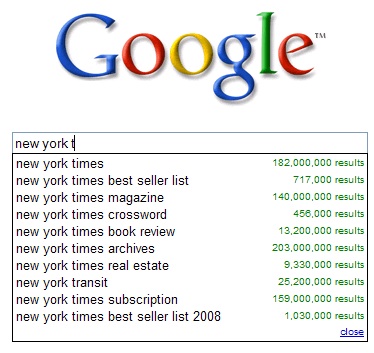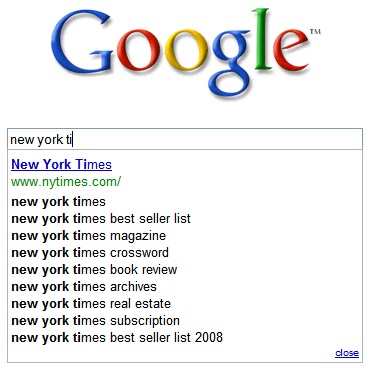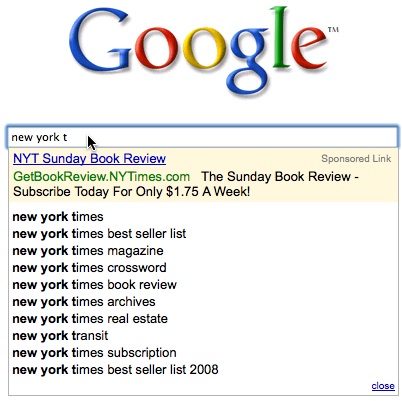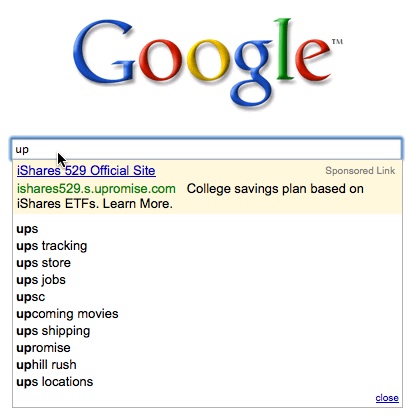Earlier this year, Google Suggest finally made it to the Google home page. The feature suggests queries as you begin typing in the search box. Now Google is testing providing links to web sites, direct answers and even ads that appear within the Google Suggest list.
Not everyone will see these changes. Google’s showing them to a small, randomly selected group of people in the US. The experiment might end at any time and not necessarily become a permanent feature.
Below, you can see how when typing in the beginning letters of New York Times (new york t…), “regular” Google Suggest offers some suggestions to complete your query:
Now consider a change that some are seeing, where a link that leads directly to the New York Times appears:
It might also appear like this:
In the example below, a search for [space shu...] suggest actual news results related to the space shuttle recently being flown from California to Florida right in the drop-down:
I don’t have an example of an actual answer being provided in results, but that’s something Google says will come.
The most dramatic change is the inclusion of AdWords ads in this box. Here are some of the ones I’ve spotted:
In the one above, I started typing the characters [new...] and got an ad for Newsweek. When I continued on, doing [new york t...], rather than seeing a link to the New York Times as with the example shown earlier, I got this ad from the New York Times itself:
And here’s yet another ad I got when I started typing [up...]:
I’m somewhat concerned about the ads appearing at the top of the list. For one thing, I think it’s way too easy for people to click on an ad to reach a web site where Google should be sending them to for free (consider the New York Times example, where one case shows a “free” navigational link while the other is a New York Times ad).
Fortunately, Google said it’s also testing an implementation where the ads appear at the bottom of the list, like this screenshot they sent me:
I prefer this much more.
The ad test is yet the latest way Google is expanding where ads might appear in its services. Just some of the others in recent weeks are covered in the articles from us below:
Why change Search Suggest in this manner?
“This is another example of search becoming more dynamic and Google getting users to the correct results as fast as possible,” said Johanna Wright, director of product management at Google.
Overall, the links seem like a good idea. In many cases, they might save people even more time to find what they want than having to wait (even though it’s a tiny time) for the search results page to load. I just hope that if the ads stay, they move to the bottom of the list.
By by Danny Sullivan From Search Engine Land





